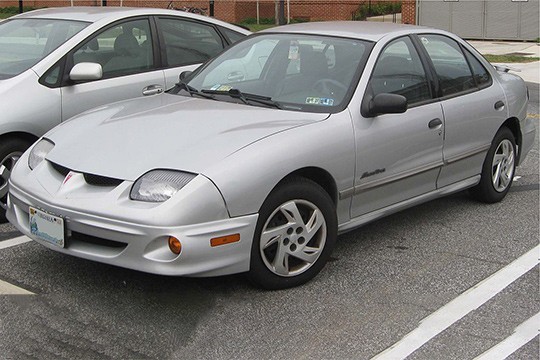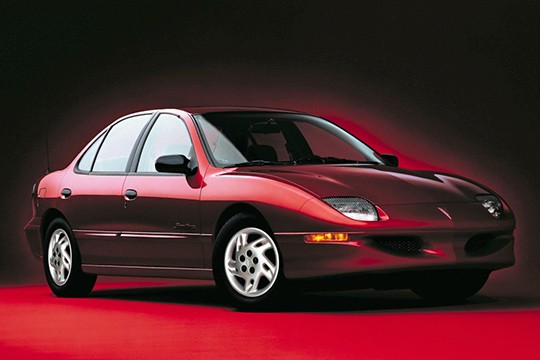PONTIAC Sunfire Sedan Models/Series Timeline, Specifications & Photos
First production year: 1994
Engines: Gasoline
Pontiac refreshed the Sunfire in 1999, and besides the front fascia, it also improved one of the engines installed under its hood.
The American brand struggled to sell more than 100,000 units per year, and it only managed that in 1997. So the automaker considered that a refresh would help sales, and it did that in 1999 for the model year 2000. But its dreams were shattered since there was only a 10% increase, and that was just for a year. After that, the figures just went down until 2005, when it finally decided to pull the plug on the small econobox that the Sunfire was.
Based on the same J-body as the Chevrolet Cavalier, the Sunfire was considered by its manufacturer a sportier version for that. To further emphasize this, it introduced a new front bumper, which featured a single slat on the lower air intake instead of two. In addition, on the sides, turn signal lamps were rounded and installed in individual clusters, flanking the bumper. The rest of the vehicle was similar, with the same steel wheels fitted on the base, SE trim level.
Inside, the materials' quality was slightly improved, but the cranked windows were still in place. The same went for the rear bench seats' folding seatback, which was still in one piece that extended the trunk's space. One of the few things that looked nice on the little Sunfire sedan's interior was the interior light, which faded out when turned off.
Under the hood, the 1999 Sunfire has received an improved 2.2-liter inline-four that was fitted as standard. While it offered five ponies less than its predecessor, it provided a higher torque that worked better with the four-speed automatic transmission that was offered as an option.
Pontiac launched the Sunfire in 1995 on the same J-platform as its Cavalier sibling made by Chevrolet, offering it as an alternative to the Escort from Ford and Neon from Chrysler.
When it switched from the Sunbird to the Sunfire, Pontiac made a big step forward on the market. The small-sized sedan could accommodate five people inside and drive them comfortably. Still, since Pontiac was a sports-oriented brand, the automaker tuned the suspension and gave the vehicle a more aggressive look than the Cavalier. While in some areas, the little Sunfire excelled, in others was below average.
With its unusual-looking headlights, the Sunfire's front fascia was inspired by the cars of the '80s with their pop-up headlights but without a lid to cover them. The car's bumper was split in the middle, resembling the Firebird's styling. But despite the front's aggressive look, it was a family sedan. At the back, the automaker dared and stretched the taillights' design onto the trunk's lid.
Inside, Pontiac placed a set of bucket seats at the front and a flat-folding bench seat in the rear. Even though it didn't feature a split system, it was a nice improvement over the previous Sunbird. The materials' quality inside the cabin was good, above average, and the glove compartment was cavernous for its class. On the instrument cluster, Pontiac installed two large dials for the speedometer and tachometer, flanked on their outer sides by the fuel-level and coolant temperature gauges.
Under the hood, the automaker installed a choice of three engines. Unfortunately, the base model was paired with a three-speed auto, which was outdated. For a four-speed version, customers had to go for the higher-powered versions. All cars came fitted with ABS and dual front airbags.

